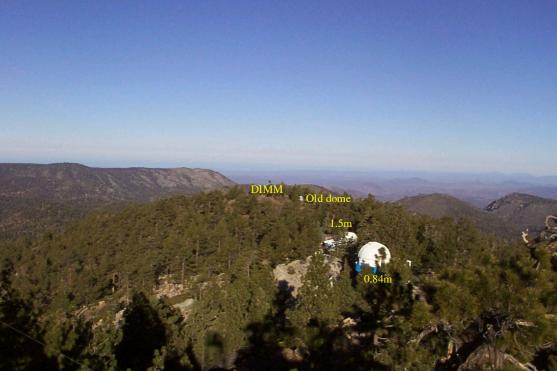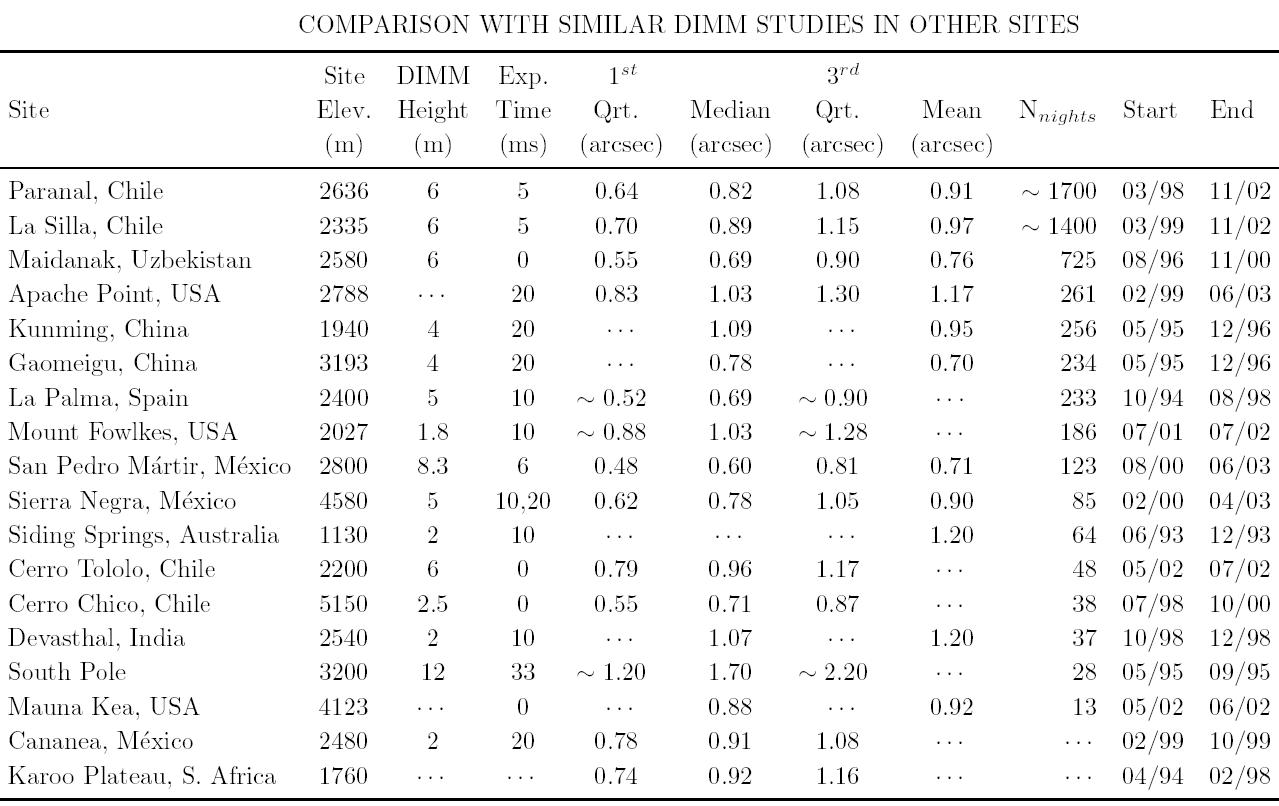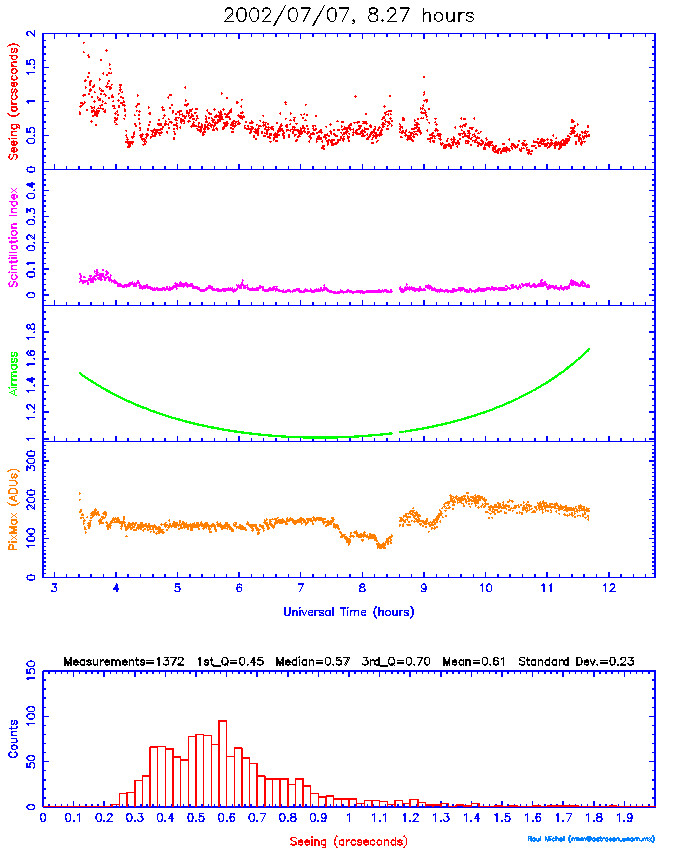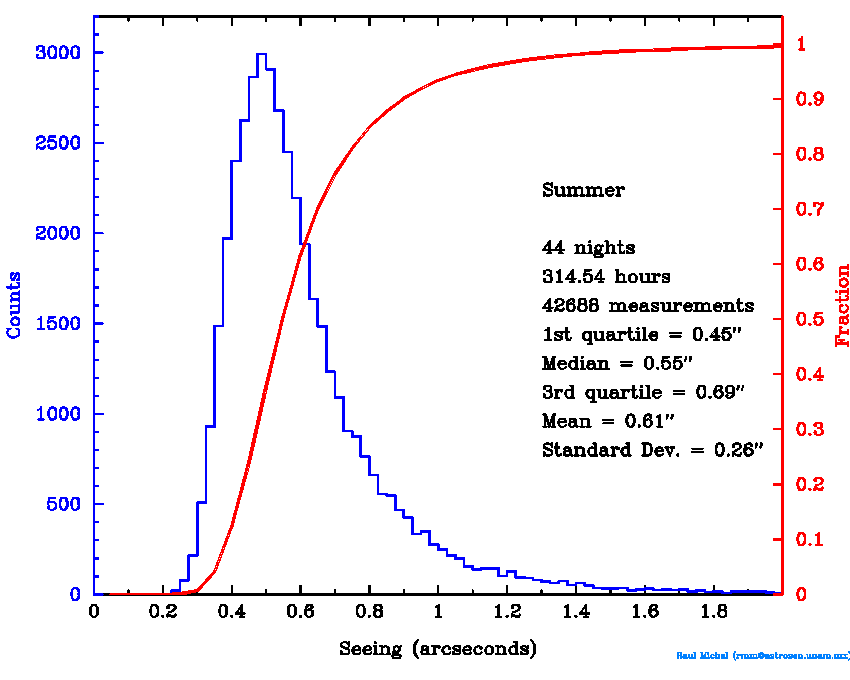




The overall median seeing and 1st quartile at 8.3 m and with 6 ms integration-time have values of 0.60 and 0.48 arcsec, respectively. Making San Pedro Mártir one of the best astronomical sites in the world as seen in the previous table.
It is not uncommon for the seeing to remain very stable for whole nights, the best results yielding a median of 0.37 arcsec for more than eight hours of continuous observations.
We found a substantial seasonal variation of seeing, in general accordance with Echevarría et al. (1998).
Summer, with a median of 0.55 arcsec, is excellent; Spring and Autumn, with median values around 0.62 arcsec, are very good, the latter slightly better than previously reported; Winter, with a median of 0.78, is not as good, and even worse than previously reported. These results might be influenced by low-number statistics, specially those for Autumn and Winter, seasons that should be better sampled.
Extrapolating our result for the yearly median seeing, we estimate a null exposure time value of 0.61 arcsec at 15 m above ground level.